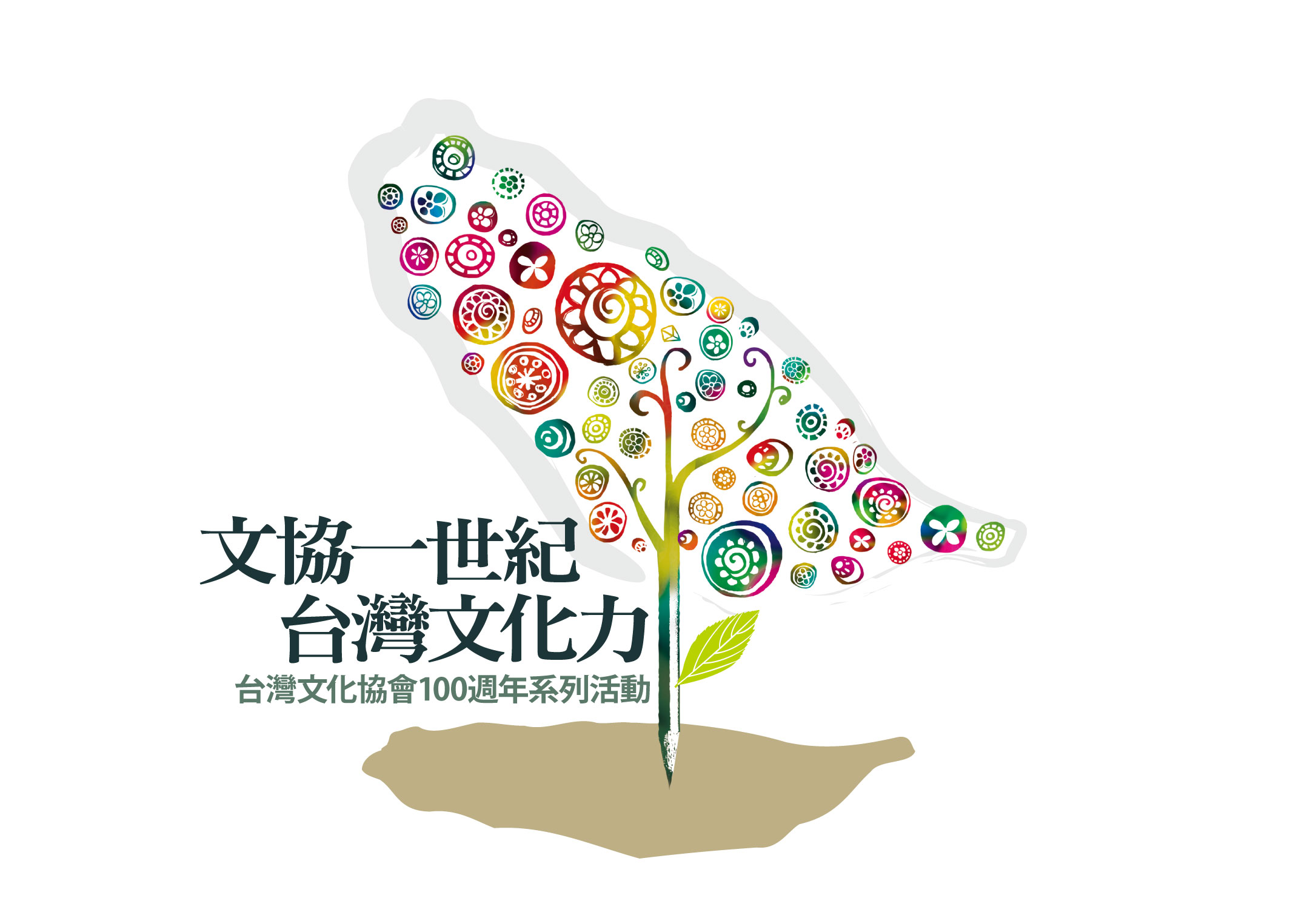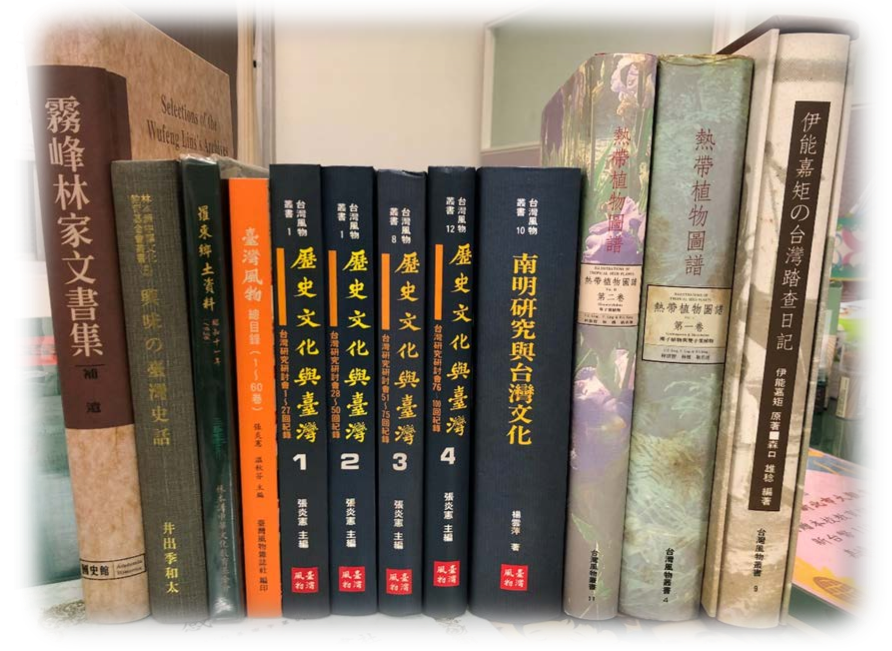 新埔枋寮義民廟與義民信仰活動
新埔枋寮義民廟與義民信仰活動
Hsinpu’s Fangliao Yimin Temple and Yimin beliefs and activities
范明煥/Fan Ming-hwang
(明新技術學院通識科老師)
(Teacher, General Education Department, Minghsin Institute of Technology)
2001-09-03
 The main gate of the Fangliao Yimin Temple.
The main gate of the Fangliao Yimin Temple.
義民廟承載著古往今來客家的精神歷史與生活文化之實質內涵,是客家義民信仰的總樞紐。由此處出發,我們得以瞭解義民在台灣歷史中所扮演的重要角色。廟宇的硬體不僅傳達出客家傳統建築之美,廟宇的祭祀儀式亦保留了客家民風的許多特色。農曆七月二十日為客家義民節,「台灣歷史之窗」特別邀請明新技術學院通識科范明煥老師執筆,由全台最具知名度的新埔枋寮義民廟談起,述說客家的義民信仰及其歷史意義之演變。
Yimin temples carry the weight of the spiritual history of the Hakka people, and the essence of their everyday culture, they are the very hub of Hakka Yimin beliefs. Taking them as our starting point, we can begin to understand the major role that Yimin has played in the history of Taiwan. It’s not simply that the facilities and installations of temples convey the beauty of traditional Hakka architecture, their sacrificial ceremonies also preserve many of the folk customs of the Hakka people. The 20th day of the seventh month in the lunar calendar is the Hakka Yimin festival, and this week’s “Window on Taiwan” has been written by Fan Ming-hwang, a teacher in Minghsin Institute of Technology’s General Education Department. Taking the Fangliao Yimin Temple at Hsinpu, the most famous in Taiwan, as his starting point, he describes the Yimin beliefs of the Hakka people and the development of their historical significance.
全台最具知名度的義民廟
中元節一過,緊跟著農曆七月二十日的客家義民節就要登場了。要談客家人的義民信仰,當然要從義民信仰的總樞紐--義民廟談起。
The most famous Yimin temple in the whole of Taiwan
The Hakka Yimin festival which falls on the 20th day of the seventh month in the lunar calendar follows soon after the Chungyuan festival. The Yimin temples are the very hub of Yimin beliefs, and the obvious starting point for any discussion of the Yimin beliefs of the Hakka people.
台灣的義民廟雖然有好幾處,但大家一談到義民廟,皆會異口同聲的直指位於新埔鎮下寮裡的那座全台最具知名度的義民廟。它不但祭祀圈包含十五大莊,且信徒遍佈海內外,實已演變為客家信仰的中心。
Although Taiwan has several Yimin temples, when people talk about them, they generally all point to the most famous Yimin temple in all Taiwan, situated in Hsialiao Li, Hsinpu Township. This temple is not only the sacrificial center for 15 villages, it also attracts followers from all over Taiwan and overseas, and has evolved into a center of Hakka religious belief.
 Foreground of the Fangliao Yimin Temple.
Foreground of the Fangliao Yimin Temple.
興建背景與重建史
枋寮義民廟的建廟原因,實肇因於乾隆五十一年(一七八六)的林爽文事件,林爽文起事於彰化大裡杙(今台中縣大裡市),反清而未復明,且部眾多不肖之徒,所過燒殺搶掠,其北路軍王作陷竹塹城,淡水同知程竣死節,林軍為搶奪糧倉地區而進攻客家莊之六張犁(竹北市東平裡)與員山仔(竹東鎮員山裡)一帶,客家先民奮起護衛鄉土而組織一千三百餘人之義民軍與戰,不但擊敗敵軍,還應竹塹城內泉籍民眾之請,裡應外合,收復竹塹城,並會同泉籍、平埔族義民南下協助官兵平亂,其間有兩百餘名義民殉難,後由領導人林先坤、劉朝珍、王延昌等收集忠骸,以牛車載回,原欲歸葬大窩口(今湖口鄉),車行至枋寮現址,牛停步不進,乃以焚香禱告後,擲筊杯求示於義民爺,義民爺意欲卜葬於此,便在乾隆五十三年(一七八八)捐建義民塚,於枋寮山之「雄牛困地穴」,翌年在塚前建立義民廟,乾隆五十五年(一七九○)冬,本廟竣工完成(據義民廟大事記),乾隆皇帝頒「褒忠」御筆敕旨,故義民廟又名褒忠亭。同治元年(一八六二)三月,彰化戴潮春事件爆發,義民軍二度出征,協助官軍平亂,犧牲百餘名義民,埋葬於總塚之左,是為附塚。
The temple’s installation and restoration
The origins of the Fangliao Yimin Temple can be traced back to the Lin Shuang-wen incident during the 51st year of the Qianlong Emperor’s reign (1786). Lin Shuang-wen started a revolt in Taliyi, Changhua (present day Tali City in Taichung County) against the Qing dynasty, in favor of restoring the Ming. He was accompanied in his task by many loutish followers who burnt, killed and looted. Lin’s army marched north and captured Chuchien Town and Tamshui, where an official, Cheng Chun, killed himself rather than surrender. Lin’s army attacked the Hakka villages of Liuchangli and Yuanshantsai in order to seize their granaries, and the Hakka settlers rose up to defend their homes, and formed an “Yimin army” [lit.: an army to uphold good faith and honesty] of over 1,300 volunteers to fight back. Not only did they manage to defeat the opposing army, they were also retook Chuchien at the request of the the Quanzhou settlers of Chuchien Town, through a concerted attack from within and without, traveling south along with settlers from Quanzhou and Pingpu Tribe people, to help officials and soldiers quell the revolt, in a spirit of good faith. More than 200 of the Yimin army lost their lives, and leaders including Lin Hsien-kun, Liu Chao-chen and Wang Yen-chang gathered up the remains of these loyal fighters, and transported them back home by ox-cart, so that they might be buried in their hometown of Tawokou (present day Hukou Village). On the way to Tawokou, the carts reached what is now Fangliao, and the oxen stopped and would not go any further. After offering prayers and burning incense, the men cast bamboo divination chips to seek instruction from the Yimin spirits, who let it be known that they wanted their bodies to be buried at this spot, and in the 53rd year of the Qianlong Emperor’s reign (1788), an Yimin tomb was constructed from charitable donations, at the site of the cave where the bulls stopped on Fangliao Hill. The next year, construction of the Yimin Temple begun, in front of the tomb, and it was completed in the 55th year of the Qianlong reign (1790). After work on this temple was finished (according to records kept at the Yimin Temple) the Emperor Qianlong bestowed the name of “Bao Chung” [lit.: “commended for their loyalty”] on the temple, and the old Yimin Temple also had the name of “Bao Chung Pavilion. In the third month of the first year of the reign of the Tongzhi Emperor (1862), the Tai Chao-chun incident broke out in Changhua, and the Yimin army went to war for the second time to help officials suppress the uprising. Over 100 men lost their lives, and were buried to the left of the main tomb, as an annex.
清光緒二十一年(一八九五),日軍攻臺,本地淪為戰場,義民廟因兵燹浩劫為平地,後經地方仕紳召集十四大莊信眾捐資重建,於光緒二十五年(一八九九)興工。三川殿步口的台階,石柱、石獅、石製頂堵、石窗、麒麟堵、門枕石等等頗為壯觀,木雕亦很精美,廟中清代以前古匾皆毀於戰火,現存較古老木匾出自日據時代,當時日本人廢廟不成,昭和十六年(民國三十年)由日本拓務大臣秋田清題贈「忠魂不朽」及時任台灣總督日本海軍大臣的長谷川清題「盡忠報國」匾,以安撫台民情緒。
In the 21st year of the Guangxu Emperor (1895), the Japanese army attacked Taiwan, and the island became one huge battlefield, and the Yimin Temple was razed to the ground as a result of fires caused by soldiers. It was rebuilt through donations gathered by the local gentry from believers in 14 large villages, starting in the 25th year of the Guangxu reign (1899). The steps in front of the temple, stone pillars, stone lions, stone walls, stone windows, the dado and stone pillows before the door are all rather spectacular, and the wooden carvings are also exquisite. All the temple’s ancient pre-Qing tablets were destroyed in the flames of war, and the old wooden tablets still extant date from the Japanese occupation. During this period, the Japanese wanted to get rid of the temple, but this did not happen, and in the 16th year of the Showa era [reign of Japanese Emperor Hirohito], 1941, in order to placate Taiwanese feelings, the Japanese colonial official Daijin, Akita Kioshi, presented a tablet that reads “loyal souls are eternal”, and the Taiwan Governor of the time, Naval Daijin Kiyoshi Hasegawa presented one reading “devote oneself to one’s country.”
 Shrine at the Fangliao Yimin Temple.
Shrine at the Fangliao Yimin Temple.
每年農曆七月二十日為義民廟祭典日--義民節由十五大莊輪流祭祀並舉辦神豬競重大賽,放水燈、起燈篙等,熱鬧非凡。除了枋寮本廟之外,尚分香至關西金山、苗栗獅潭、三灣、南投中寮、國姓、水裡等地建立義民廟,祭祀的方式與主廟大同小異。在沒有建義民廟的客家地區,以新竹縣為例,也大都在主要廟宇如三官大帝廟,或是三山國王廟,皆配祀有義民爺。
The 20th day of the seventh month in the lunar calendar is the day of the sacrificial ceremonies at the Yimin temple – the Yimin Festival when the 15 big villages take it in turns to hold the ceremonies and competitions, put out water lanterns and erect lantern poles, and have a very lively time. Apart from the Fangliao temple, there are also Yimin temples at Chinshan (Kuanhsi Township), at Shitan and Sanwan in Miaoli, and at Chungliao, Kuohsing and Shuili in Nantou, and the style of the ceremonies and temples are all slightly different. In Hakka regions which have no Yimin temple, to take Hsinchu County as an example, and at major temples in big cities like the Sankuan Tati Temple, or the Sanshan Kuowang Temple, ceremonies to honor the Yimin spirits are still carried out.
義民爺隨時代而有不同的任務
義民爺最早是以鄉土守護神接受頂禮膜拜,隨著客家人開墾內山的腳步,義民爺也被請到山區來做為防止原住民出草為害的神祈,因此義民爺有了「防番」的功能。在醫療不發達的過去,又有不少人祈求免為瘟疫所苦,所以義民爺又成了客家人的醫療神。等到交通日益進步,家家有汽機車代步,由於交通事故頻頻發生,因此許多信眾至義民廟,為自己及愛車佩帶義民爺的平安符,以祈求行車安全。除此之外,當哪一家有年輕子弟要入伍當兵時,亦由父母帶至義民廟,祈求軍旅平安。
The duties of the Yimin spirits change with the times
Originally, the Yimin spirits were worshipped as spirits who would protect the local area, but as the Hakka people developed and exploited land in the mountains, the Yimin spirits were asked to come to the mountains to prevent the Aboriginal headhunters from hurting the settlers, and consequently the Yimin spirits developed an “anti-Aboriginal” function. In the days when medical treatment was not very advanced, many people prayed to the Yimin spirits to protect them from epidemics, and so they become the medicine gods of the Hakka people. As transport and communications improved and people began to use motor cars, traffic accidents became commonplace, and so many believers turned to the Yimin temples, and began to wear safety amulets to gain protection on the roads for themselves and their beloved cars from the Yimin spirits. In addition to this, when a young man entered the army, his parents would take him to the Yimin temple to pray for a peaceful term of service.
據老一輩的說法,這一種入營前虔誠祭拜的習俗,是二次大戰時期興起的,當年日本殖民政府徵集臺灣青年當軍夫,當被迫志願當日本兵的客家青年首度踏上征途,必定會到義軍出身的義民廟前祭拜,祈求平安歸來,相延成風。直至今日,雖無戰爭,服義務役的客家青年,當兵之前仍會到義民廟祈求,因之義民爺又扮演了軍旅守護神的角色。義民爺的角色一直在時代裡演變擴充。
According to the tales of the older generation, this custom of pious sacrifice before entering the army started at the time of the Second World War, when the Japanese colonial government drafted young Taiwanese men into their army, and this was the first step of the long journey made by young Hakka men forced to become Japanese soldiers. They would pray for a safe return, and this became a common practice. To this day, although we are not at war, young Hakka men off to do their military service will go to pray at an Yimin temple before they enter the army, and so the Yimin spirits play the role of protectors of the troops. The roles of the Yimin spirits have changed and augmented with the times.
「挑飯」與「過爐」
這種配祀義民爺的情形,在新竹縣還特別發出一種「挑飯」(奉飯)的習俗,不論是大鄉鎮如竹東,小鄉鎮如橫山、峨眉,甚至偏遠的大山背(橫山鄉豐鄉村)至今仍保有這種習俗。挑飯的習俗是由鄰或村裡為單位輪流,每天由幾戶人家準備好煮好的飯菜,挑至主廟中配祀義民爺處祭拜,週而復始,全年不間斷,每天皆有好幾戶人家前來祭拜。最特別的是,祭品是用剁好的雞鴨,而非全雞全鴨,豬肉是用切成一片片的「切盤」,頗有「簞食壺漿以迎王師」的遺風,也有些「犒軍」的味道。這樣一來,各村各裡、家家戶戶皆可就近祭拜,在過去物質缺乏的年代,這也是大家趁機慰勞自己、打打牙祭的好機會,更是與親朋鄰居聯誼的快樂時光,是大人和小孩都期待的盛事。
Offering food and burning incense
In Hsinchu County, a special “food offering” custom has arisen in the ceremonies for the Yimin spirits. No matter whether it’s a large town like Chudong or a small one like Hengshan or Omei, or even the remote Tashanpei, this custom has been preserved to the present day. The “food offering” custom alternates between neighbors or villages, and everyday, several households prepare cooked dishes and carry them to the sacrificial ceremony honoring the Yimin spirits at the temple, and this goes round in a cycle, uninterrupted throughout the entire year, with several households coming each day to make the sacrifice. The most special thing about this is that the sacrificial food is minced chicken and duck, not whole chickens or ducks, and the pork used is cut into slices. It’s rather like the custom of “welcoming the emperor’s army with food.” In this way, each little village and each household can take part in the sacrificial ceremony close to home, and in the past, when food was harder to come by, this was a way for everybody to have the chance to reward themselves and have a rare good meal, and even more than this, a chance to have a good time with one’s family, friends and neighbors, a big event eagerly awaited by both adults and children.
除了挑飯(奉飯)之外,每年七月二十義民節,也是各家各戶香旗回娘家過爐的日子。數以千計的信徒,人人手持家中奉祀的黑色香旗回枋寮總廟,過爐或更換新的香旗,再迎回家中奉祀,年年週而復始。信眾甚至有遠至新加坡、香港、九龍的,仍然不遠千里迎回香旗過爐,義民信仰也隨著客家人的海外發展,無遠弗屆的發揚出去。
Apart from the “food offering,” the Yimin festival on the 20th day of the seventh month is also the day when Hakka women return to their parental home to burn incense. Believers in their thousands converge on the central Yimin temple at Fangiao with black incense flags used in ceremonies in the home, which they burn and exchange for new ones that they carry home again, and this is done on a yearly basis. There are believers as far away as Singapore, Hong Kong and Kowloon, and well as those from more local areas, and Yimin beliefs have followed the Hakka in their development abroad, there is no place where they have not reached.
Edited by Tina Lee/ translated by Elizabeth Hoile
李美儀編輯/何麗薩翻譯









